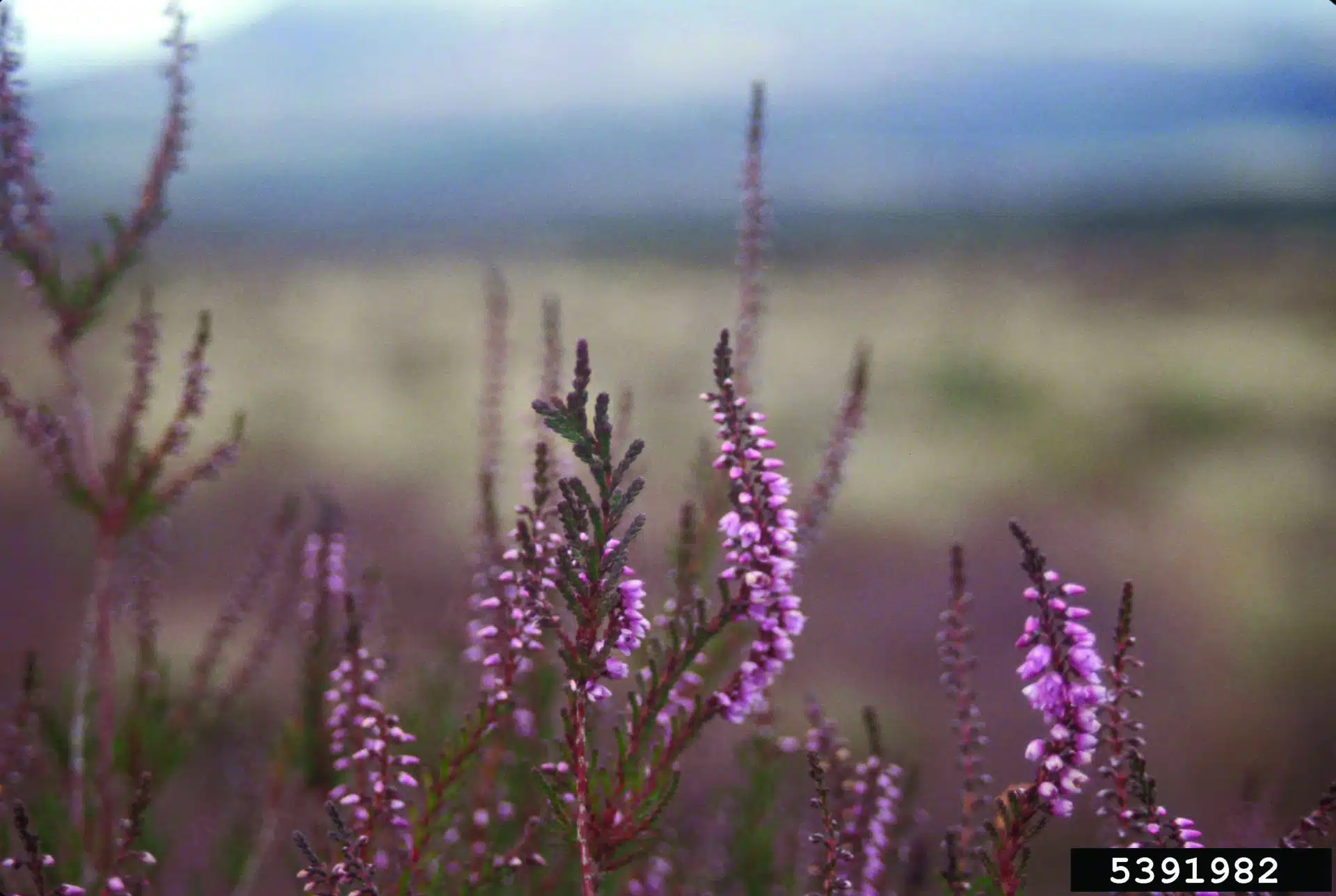Nature Profile
Plants
Heath and Heather
Erica and Calluna

Erica and Calluna are charming shrubs in the heath family (Ericaceae). They are native to the moors, mountains and woods of Europe, Africa and western Asia. Heaths (Erica) contain more than 700 species, but heathers (calluna) only one. In the 18th century nearly 200 of the 600 plus species of Erica endemic to South Africa were introduced to Britain where nurserymen started their first large scale ornamental plant breeding program. Some 285 named varieties of Cape heath were created but they needed to be grown in a green house. Hardy heaths became popular after World War II.
At The Holden Arboretum a number of heaths and heathers are on display as ground covers in the Helen S. Layer Rhododendron Garden, in the Sally L. Gries Entry Garden beds and in the gardens of Lantern Court. The most recent plantings have been in the Eliot and Linda Paine Rhododendron Discovery Garden.
Generally, heaths bloom in the winter and spring while heathers bloom in the summer and fall. During exceptionally warm winters heaths have bloomed during December, January and February at Holden, but usually do not put on a significant show until March and April, with some flowers persisting into May, but rarely into June. Heathers start blooming in July with August being the peak season and some blossoms opening in September and October. Heaths and heathers are insect and wind pollinated, both being nectar sources for honeybees.
The foliage of heaths is small, needle-like and borne in well-spaced whorls on the branchlets. Heathers have tiny needle to scale-like leaves that are closely spaced and borne in four ranks along the branchlets like the four points of a compass. A number of heathers have colorful foliage from fall through winter. In the Paine Rhododendron Discovery Garden Calluna vulgaris ‘Firefly’ is a standout for its colorful foliage. It was awarded the Award of Garden Merit (AGM) by the Royal Horticultural Society. Other heathers with colorful orange and red foliage planted in 2013 not far from ‘Firefly’ include ‘Blazeaway’, ‘Wickwar Flame’, ‘Winter Chocolate’ and another AGM winner in ‘Robert Chapman’. The most pronounced foliage colors occur in fall, lasting through winter. ‘Silver Knight’ has silvery foliage as do a number of other cultivars. The flowers of Calluna are typically lavender to mauve or white. In the United Kingdom white-flowered heathers have long been associated with good luck making them a popular flower at weddings.
The Heather Society of the United Kingdom proclaims, “Everyone can grow heathers!”, but there are some challenges in our climate and soils. Heathers prefer acidic sandy loams that do not dry out. A blanket of snow can protect them from low temperatures and winter sun. However, in harsh winters like 1995-96 when snow cover was not consistent, there can be significant mortality and severe injury to all heaths and heathers in our climate. While smaller plantings can be protected from winter wind and sun with evergreen boughs, this may not be practical for many gardeners.
Heather needs to be pruned annually in order to remain showy. In our climate pruning in early spring before new growth starts is best and fall or winter pruning is not recommended. Shearing off old spent flower heads along with taller stems that did not flower makes for fuller and more ornamental plants. However, the dwarf varieties or “bun” types do just fine without any pruning.
Spring heath (Erica carnea) is a native of the mountains of central and southern Europe, most famously the Swiss Alps. This is the most common heath in our gardens. Erica carnea ‘Springwood White’ is well established in Heath Vale of the Layer Rhododendron Garden. ‘Springwood Pink’ can be found on the west side of the Layer Garden, but the area has become so shady that it is rather sparse. New plantings in the Paine Rhododendron Discovery Garden include ‘Pink Spangles’, ‘Rosalie’, ‘Tanja’, which is also pink-flowered, and the white-flowered ‘Schneekuppe’.
Erica carnea should be pruned in late April or early May for the first few years after planting. Thereafter, they can be pruned every other year to achieve fuller plants and longer flower spikes. Mature Erica carnea can spread 4’ or more. Overgrown plants can be lifted by the ends and pruned from beneath to keep them in bounds.
Good companion plants for heaths and heathers include cranberry, dwarf conifers, lavender, thyme, red-hot pokers (Kniphofia), black mondo grass (Ophiopogon planiscapus ‘Nigrescens’), or even small daphnes such as Daphne ‘Kilmeston’ or ‘Lawrence Crocker’ to add fragrance to the bed.
Photo credit: John M. Randall, The Nature Conservancy, Bugwood.org




